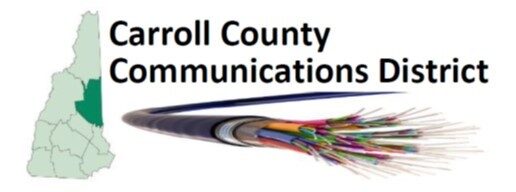Broadband Internet Components: A Simple Guide
1. Fiber Internet:
Fiber internet uses thin glass or plastic fibers to transmit data. It’s known for its fast speeds. Most providers can provide 1-2 Gigabits/second, both for upload and download speeds, but also offer slower options at lower cost.
– Optical Network Terminal (ONT): This is like a fancy modem that connects to the fiber-optic cable.
– Router: This device takes the internet signal from the ONT and sends it to your computer, phone, or other devices.
– Wi-Fi Equipment: If you want to use the internet without wires, you’ll need Wi-Fi equipment, usually built into the router.
2. Cable Internet:
Cable internet uses the same lines as your TV cable. Maximum speed is generally limited to 960 megabits/second download and 35 megabits/second upload speed. Lower cost consumer offerings start at 300 Mbps download and 10 Mbps upload.
– Modem: This box connects to the cable in your wall and turns it into an internet signal.
– Router: Connected to the modem, the router sends the internet to your devices. Often the in the same box as the modem
– Wi-Fi Equipment: Again, this is for using the internet wirelessly, often part of the router.
3. Satellite Internet:
Satellite internet is beamed down from satellites in space. It’s useful in rural areas. Older offerings, like Hughes or Dish have speed and data volume limit issues. Starlink is a newer offerings that provides faster speeds that other satellite providers and no data caps, but requires a clear view of the sky.
– Antenna (Dish): This is a special bowl-shaped antenna that you put outside. It talks to the satellites.
– Modem: The modem takes the signal from the antenna and makes it something your computer can use.
– Router and Wi-Fi Equipment: Just like with cable, these send the internet to your devices without wires.
3. Fixed Wireless
Fixed wireless providers provide internet over radio, from antennas mounted on surrounding hills.
- Antenna: This is a special shaped antenna, sometimes looking like a grill grate, that is aimed at the providers antenna on a hill. It is best to have line of site with the provider and if you are deep in the woods, this technology may not work.
- Modem, Router and Wi-Fi equipment are the same as other technologies.
4) Cellular Wireless
The same providers that service cell phones offer service for your home. Speed and data volume limits are issues to evaluate when looking at this option.
Understanding the Parts:
– Antenna (For Satellite or Fixed Wireless): Think of this like a satellite TV dish. It’s your connection to the big world out there.
– Modem: This is the translator. It takes the signals from the outside and turns them into something your computer understands.
– Router: Imagine this as the postman. It takes the translated messages from the modem and delivers them to your computer, phone, or TV.
– Wi-Fi Equipment: This lets you move around with your devices and still be connected to the internet, just like using a cordless phone instead of one attached to the wall.
Conclusion:
Understanding the internet might seem tricky, but it’s just about knowing the parts and what they do. If you ever need help, don’t hesitate to ask a family member or call your service provider. They’re there to help you stay connected with your loved ones and the world.
